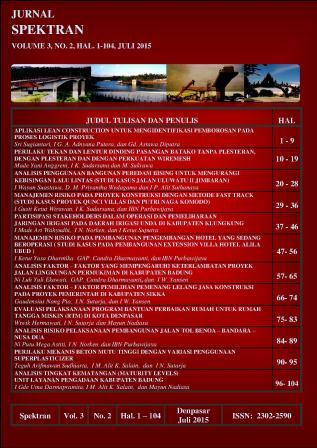MANAJEMEN RISIKO PADA PEMBANGUNAN PENGEMBANGAN HOTEL YANG SEDANG BEROPERASI ( STUDI KASUS PADA PEMBANGUNAN EXTENSION VILLA HOTEL ALILA UBUD )
Abstract
Construction of the hotel development is carried out without cessation of the hotel operations have a bigger challenge because of many things such as: accesses to the hotel, material loading area, noise, safety of guests and hotel staff, working time, demonstrations, etc should be well managed in order to minimize the impacts to hotel operation. Risk is the chance of occurrence of adverse events, which is caused by the uncertainty. The research aims to identify, analyze and how the risks can be managed. The method in this research is Descriptive Qualitative Risk Analisis. Respondents determined by Purposive Sampling, from various stakeholders who are competent in this development. The research are identified 47 risks. Eleven risks are unacceptable risk includes : noise, licensing, planning of MEP works, declining of contractor profit, the rising cost for build a new access roads, land slides, limited parking, hotel access interference, discomfort of the hotel’s guests and staff, disruption in the project work time and delay of project completion due to interruption by the hotel operations. Nineteen risks are undesirable risk includes: public opinion, decreasing of green open land, insufficient capacity of the existing facilities, difficulties in the hotel's marketing, declining of the hotel room’s selling prices, the declining of satisfaction level of hotel guests, decreasing of hotel’s profits, lack of project scope, nappropriate strategy for supplying material and equipment and lack of competence of the project consultants and contractors, inappropriate standard of job’s handling, lack of quality control, inappropriate project organizational, improper work methods, limited area for materials loading, decreasing of cleanliness levels of the hotel, insufficient noise isolation blocks. Ten risks are acceptable risk and seven risks are negligible risk. Major risks are unacceptable and undesirable risk, which are need to be managed by determining their allocation, ownership and mitigation actions.




